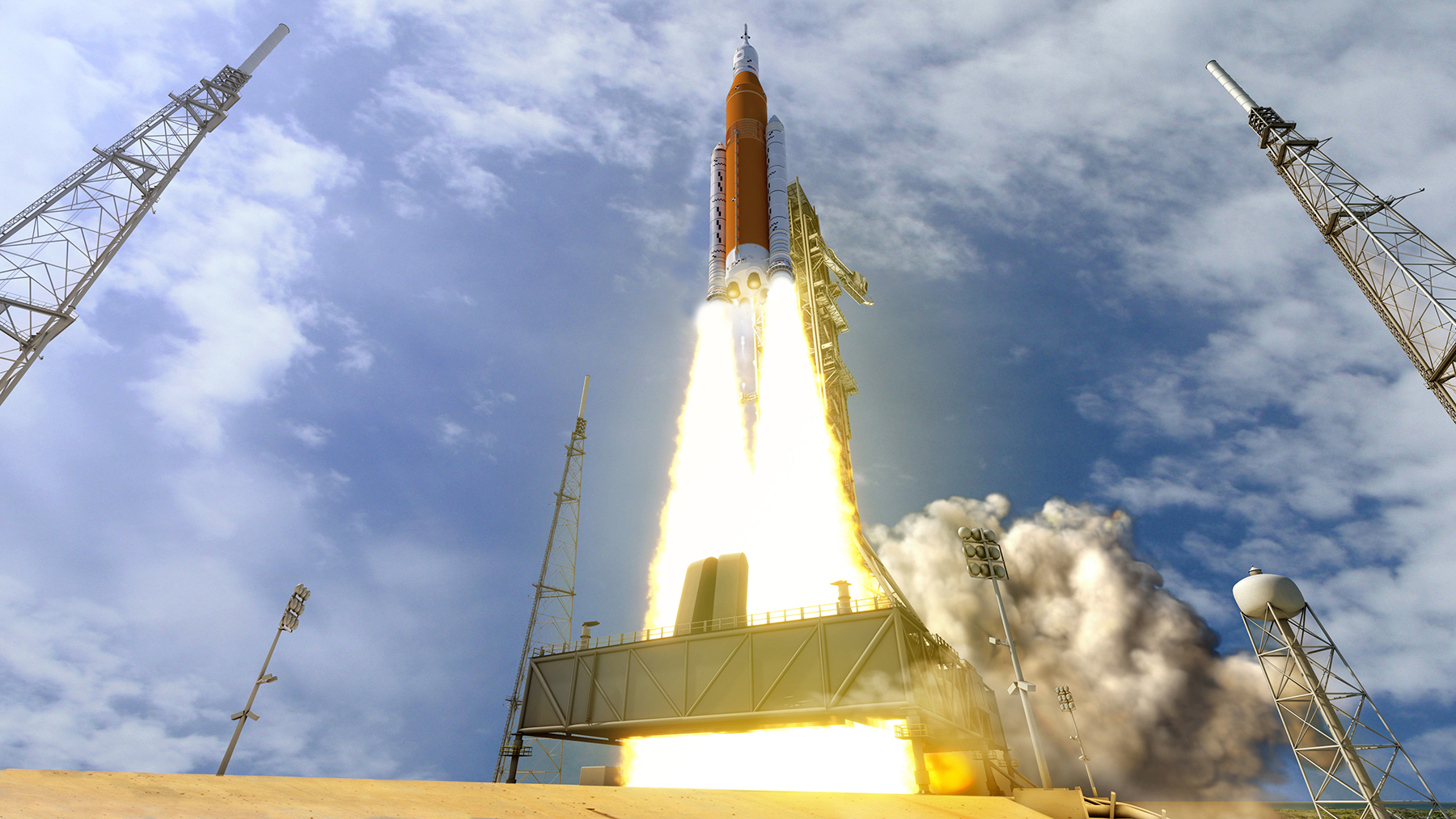NASA May Skip Its Megarocket and Use Private Booster for Orion Moon Trip

NASA is considering launching its Orion crew capsule on a commercial rocket rather than the Space Launch System, the agency's own megarocket that is currently under development.
The Space Launch System (SLS) is a super-heavy-lift launch vehicle touted as what will be the most powerful rocket in existence. It will be capable of carrying astronauts beyond low Earth orbit, as NASA aims to do with the Orion Multi-Purpose Crew Vehicle.
However, delays and cost overruns with SLS seem to indicate that the new rocket won't be ready on time for Orion's first test flight around the moon — Exploration Mission-1 (EM-1) — which is currently scheduled to launch in June 2020.
Related: The World's Tallest Rockets: How They Stack Up
"We're now understanding better how difficult this project is and that it's going to require some additional time," NASA Administrator Jim Bridenstine told the Senate Committee on Commerce, Science and Transportation at a hearing in Washington today (March 13). Bridenstine assured the committee that he and NASA are committed to keeping EM-1 on schedule, even if that means the agency will have to buy a commercial rocket.
Bridenstine did not name any specific launch providers at the hearing, but considering how powerful the rocket will have to be, NASA has two options: SpaceX's Falcon Heavy rocket or a Delta IV Heavy rocket built by the United Launch Alliance. Exactly how much it will cost NASA to hire a commercial launch provider is not clear at this point, but Bridenstine said the agency "might require some help from Congress" to fund it.
For now, SLS is not yet officially off the table for EM-1; NASA will make a decision "in a couple of weeks," Bridenstine said. Even if the agency does opt for a privately built rocket for EM-1, it still plans to use SLS for future Orion missions, Bridenstine said.
Breaking space news, the latest updates on rocket launches, skywatching events and more!
However, the White House's budget proposal for 2020 has also deferred plans to build an upgraded version of the SLS, known as the Block 1B, which the agency planned to use to launch components of the Lunar Orbital Platform-Gateway, a new lunar space station that astronauts could visit by the mid-2020s. Instead, the proposed budget calls for NASA to consider using commercial launch vehicles to build the gateway, too.
- Space Launch System: NASA's Giant Rocket Explained (Infographic)
- NASA's SLS Megarocket Over Budget, Behind Schedule, Report Finds
- Trump's 2020 NASA Budget Will Take US from Moon to Mars
Email Hanneke Weitering at hweitering@space.com or follow her @hannekescience. Follow us on Twitter @Spacedotcom and on Facebook.

Hanneke Weitering is a multimedia journalist in the Pacific Northwest reporting on the future of aviation at FutureFlight.aero and Aviation International News and was previously the Editor for Spaceflight and Astronomy news here at Space.com. As an editor with over 10 years of experience in science journalism she has previously written for Scholastic Classroom Magazines, MedPage Today and The Joint Institute for Computational Sciences at Oak Ridge National Laboratory. After studying physics at the University of Tennessee in her hometown of Knoxville, she earned her graduate degree in Science, Health and Environmental Reporting (SHERP) from New York University. Hanneke joined the Space.com team in 2016 as a staff writer and producer, covering topics including spaceflight and astronomy. She currently lives in Seattle, home of the Space Needle, with her cat and two snakes. In her spare time, Hanneke enjoys exploring the Rocky Mountains, basking in nature and looking for dark skies to gaze at the cosmos.
